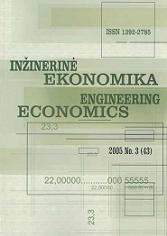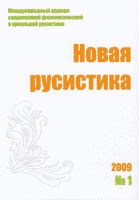
Internal Audit Subordination Principles for Lithuanian Companies
Current business environment has experienced rapid and revolutionary change with far reaching consequences for companies worldwide. Management responses to fierce global competition include improved quality and risk management initiatives, reengineered structures and processes and greater accountability to ensure more timely, reliable and relevant information for decision-making and to secure confidence and trust of the investors. Over the last few years the importance to the strong corporate governance of managing risk has been increasingly acknowledged. Companies are under pressure to identify all the business risks they face: social, ethical and environmental as well as financial and operational, and to explain how they manage them to an acceptable level. Therefore in order to reach its objectives each company has to develop and implement an approach to assessing and managing the uncertainties and opportunities it faces in the pursuit of its business strategy, with the intention of maximizing shareholder value and performance, i.e. meeting the determined objectives. Shareholders are extremely demanding with respect to the activities of the management wanting an independent and objective assessment of the risk management and governance system the management is responsible for. In this radically changed business environment internal auditing gained an important role within companies. Over past sixty years internal audit developed from control function responsible for inspection of accounting and financial data to a strategic partner for the shareholders and the management of the company in improving governance processes. In current environment management of the company more and more rely on the internal audit to evaluate whether controls are sufficient to manage risks and uncertainties. This developing role of the internal auditing is also reflected in its current definition, i.e. internal auditing is an independent, objective assurance and consulting activity designed to add value and improve company’s operations. It helps an organization accomplish its objectives by bringing a systematic, disciplined approach to evaluate and improve the effectiveness of risk management, control and governance processes. Only independent internal audit can perform its tasks properly. Independence of internal audit is influenced by functional subordination level which relates to the assurance activities of internal audit. Proper level of functional subordination influences independence and objectivity of internal audit. This article analyzes theoretical principles of functional subordination, which determines that internal audit must be subordinated to audit committee or independent board. However from the ownership structure perspective, which is analyzed in Lithuanian companies, internal audit functionally might be subordinated to the other management bodies, without hindering its independence.
More...
